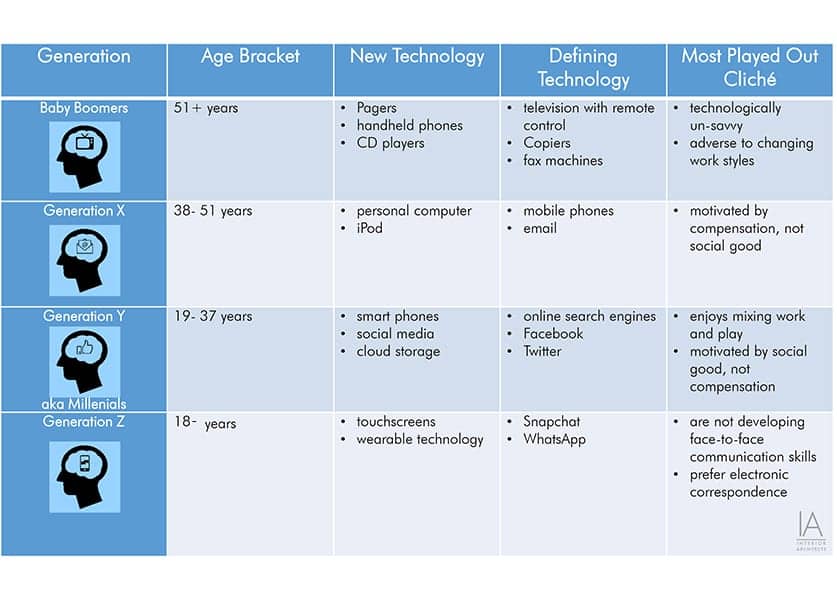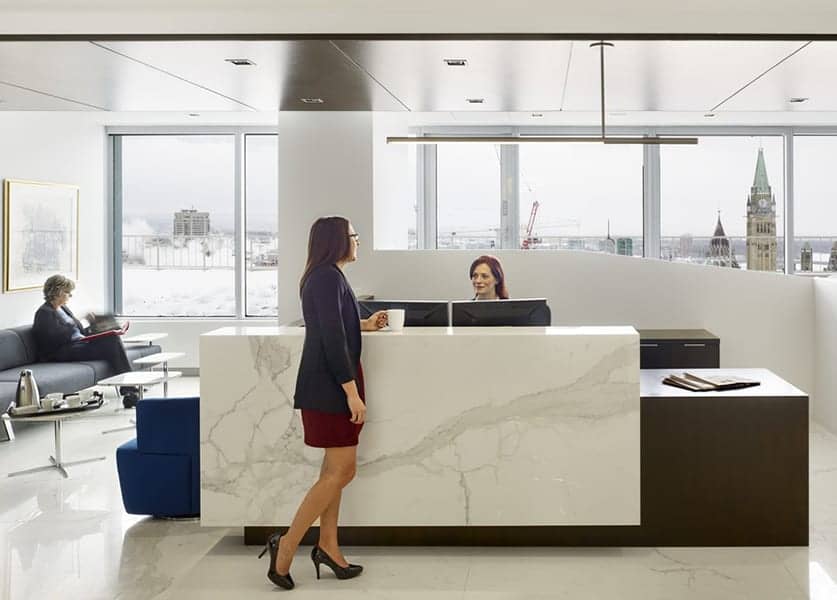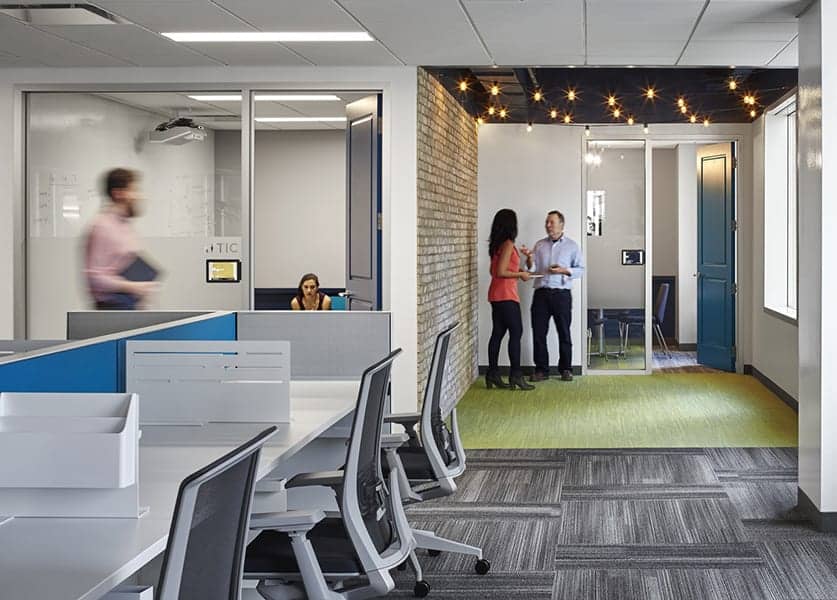More...
By Cynthia Martinez | Client Services Manager
April 5, 2016
HOW DO YOU DESIGN ONE WORKPLACE TO EMPOWER FOUR GENERATIONS?
The conversation around generations and the clichéd stereotypes with which they’ve been appropriated is a tired conversation, and not relevant to informing workplace dynamics. But the characteristic relationship and comfort level of each generation with the technology that drives the workplace remains a significant indicator of generational preferences and ways of working. Technology is a key factor in the social, economic, political, global, and life events that characterize the experiences of each generation.
For the purpose of this article, here’s a quick capture of generation monikers, age groups, communication preferences, and most played-out stereotypes based on research from Knoll, JLL, Forbes, The New York Times, and Huffington Post:
In 2020, Generation Z will begin entering the workforce in large numbers—just as Generation Y numbers peak, and Generation X moves into elevated leadership roles as Baby Boomers begin to retire. Full disclosure: I am a Gen Xer. I was born the year that the first Star Wars film was released, and grew up with MTV. And I’m also the proud mother of a multi-tasking, tech savvy Gen Z daughter.
Significantly, research reveal’s a number of parallels between the workplace preferences of Generation Z and Boomers. According to the New York Times, Generation Z values structure, order, and stability. They’ve grown up with social media as a constant presence, are fully accustomed to monitoring self and activity with wearable technology, and are able to multitask like no other generation before them. With that in mind, studies indicate that their collectively flexible attention span will benefit from help in focusing.
Generation X is currently positioned to bridge multi-generational preferences in the workplace. We were raised by Boomers, manage Millennials, and parent Generation Z. What does all that mean for work and the workplace? We have an innate understanding of the more formal communication methods and styles favored by Boomers; we can adapt to the technologies embraced by Millennials; and are comfortable with traditional workplace hierarchies that still guide most companies today. As IA posited in a 2009 white paper: “The emphasis Gen Xers and Millennials place on collaboration creates an opportunity for cross mentoring that allows Baby Boomers to advise and pass on their valuable knowledge and experience.”
Just like bell bottoms from the early ‘70s came back in the late ‘90s, there are cycles of repetition between workplace generations. So, how do we plan for the next generation to join the workforce? Can one size really fit all? Yes, it can.
THERE’S A PATTERN
Based on nearly 20 years of designing commercial environments, I’ve noted the following patterns: Boomers are comfortable with traditional and transitional layouts. Generation X can navigate this wide spectrum, but tends to prefer somewhere in between the transitional and more open office layouts. They may not be as excited about the whimsical and unstructured office design as Millennials, who’ve shown preference for an unstructured, expect-the-unexpected workplace and are perfectly comfortable working from a coffee shop and playing air hockey in the middle of the work day. Generation Z, on the other hand, prefers a clear understanding of the intent of different work environments with an understandable layout. Don’t get me wrong: They like having different work environments, but they also like to know what to expect while enjoying the flexibility of being able to move around. When it comes to the workplace, Generation Z looks more like my parents!
Although getting lost in the intertwining streets of Venice can be incredibly romantic and lead you to intriguing discoveries, you may eventually feel frustrated when it’s time to get back to your hotel. The other end of that spectrum is a deep appreciation for the modern-day urban grid, such as the city of Chicago grid, which helps us appreciate the simplicity of secure and predictable navigation.
When designing for a multi-generational workforce, keep in mind that structure can be achieved by providing a clear and intentional layout where everyone understands the purpose of each space and how to get there. Design an “intelligible workplace.”
1. Use clear and directional circulation and wayfinding.
2. Use interior landmarks (graphics and signage) that tell you where you are.
3. Make the intent and organization of the spaces obvious.
Enclave spaces or collaborative spaces are still relevant to encourage those instances of serendipitous interaction. We are increasing focus on technology to enable more video conferencing and digital interaction. As more and more offices allow employees to work remotely and network with offices in multiple cities, the need for instant access to interact with those not physically present is crucial. Refuge spaces or focus rooms will help multi-taskers focus on the task at hand, as well as provide privacy for one-on-one sessions with mentors and managers. Regardless of age, sometimes it’s nice to have a little privacy to make that phone call or get your work done.
We certainly won’t lose the fun factor or sensation of discovery. We just have to be more direct about it.
IA is a global firm of architects, designers, strategists, and specialists. We focus exclusively on environments through the lens of interior architecture—a radical idea in 1984, when IA was founded. We are highly connected agents of change, committed to creativity, innovation, growth, and community.
IA is a global firm of architects, designers, strategists, and specialists. We focus exclusively on environments through the lens of interior architecture—a radical idea in 1984, when IA was founded. We are highly connected agents of change, committed to creativity, innovation, growth, and community.
Like What You See?
Learn more about designing for GenZ in particular by clicking the button below!
How to bridge the generation gap in the workplace.





